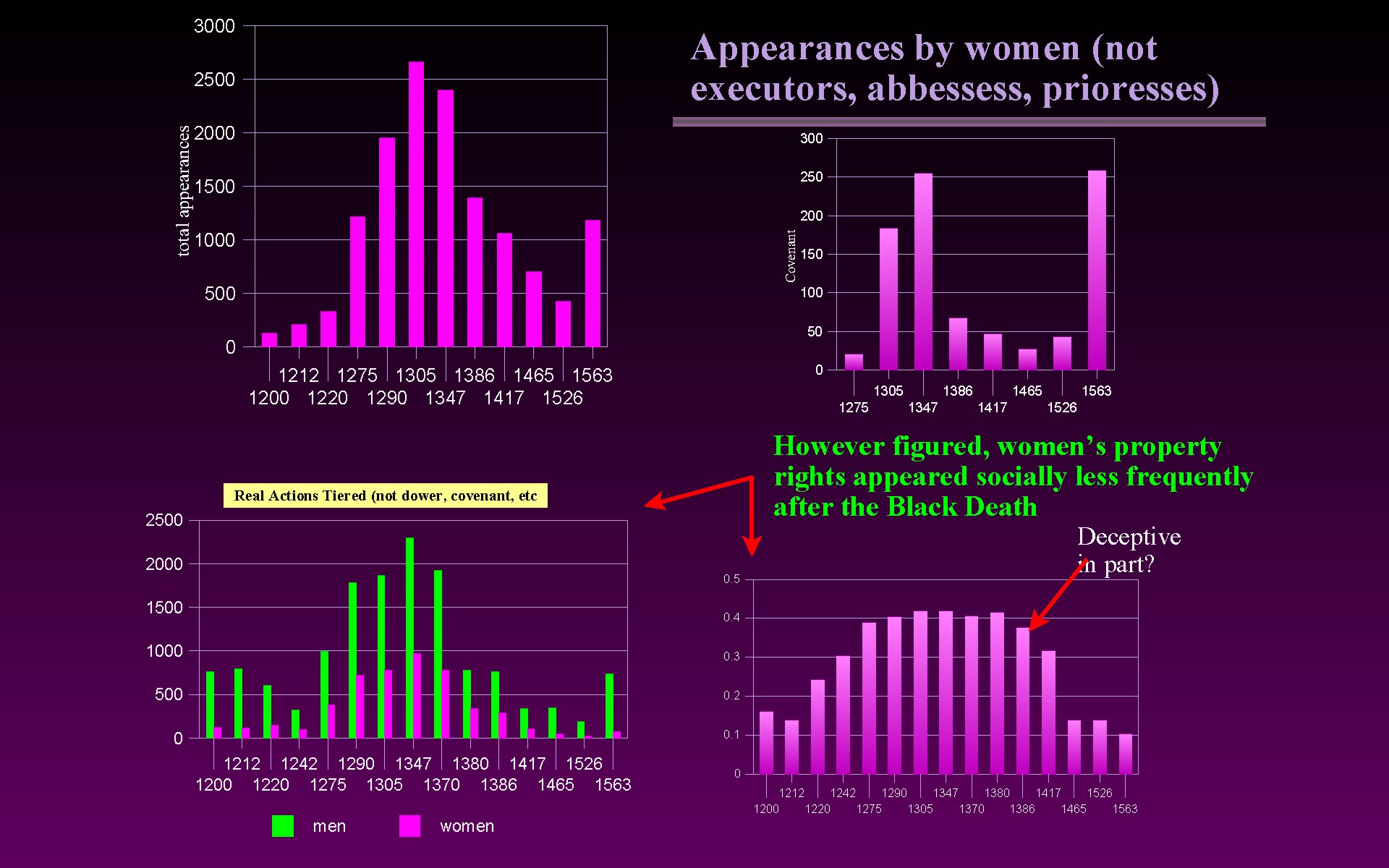


Women's Property Rights: The Action of Waste
Women appear to have held real property less frequently after the Black Death than before. Women as parties in litigation rapidly declined overall after the Black Death, but this figure is difficult to interpret on its own because the real actions themselves were in decline. The dramatic decline of women involved in actions of covenant (normally used not for ordinary agreements but for land transactions) indicates that women had to be involved much less frequently in land transactions and thus held real estate less frequently. The huge increase in 1563 is not a counter-indicator. Covenant actions were necessary to get property rights of women (acquired by inheritance occasioned by the continuing effects of the Statute of Uses) out of the hands of women: the increase in female covenant defendants actually indicates a prejudice against women holding real estate.
The next two graphs concern the tiered actions: assizes, writs of entry, writs of right, actions of formedon, etc. They remain relevant even after the Black Death, after which a declining number of such actions were litigious. Used merely as indicators about whether women had to be involved in legal matters about real estate and thus were owners or joint owners of the property, women seem to have gone from .41 women to every man who held real estate to .14 to 1 by the Reformation and .1 to 1 by 1563. These ratios may not hold at the lowest level of society, and it will be interesting to see if they are verified from other databases. At least part of the data could be explained away as an artifact of the overall decline of the old real actions, since in trespassory actions the husband would not have to involve his wife even if she was the owner. That explanation, however, will not account for the trend shown in actions of covenant.

AALT Homepage





